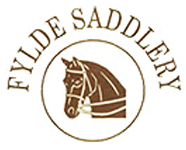A stirrup that’s too long usually results in a loose, swinging lower leg. Plus it undermines the rider’s position. Instead of a classic hunt seat look, with a slightly forward angle to the rider’s upper body, a too-long stirrup can force the rider into what’s often called the “chair seat.” In the chair seat, the rider sits too far back in the saddle (toward the cantle) with the toe of their boot near the horse’s elbow. It does appear as if the rider is sitting in a chair rather than on the back of a horse. The chair seat rider is perpetually behind the motion of their horse.
At the opposite extreme is the stirrup that’s too short, If the stirrup is too short the rider’s leg appears cramped and hiked up beneath their upper body. Besides making the lower leg less effective as an aid, the too-short stirrup also corrupts the rider’s position. Similar to a jockey, they ride above the action of their horse, perched precariously out of the saddle and this then causes the rider to rise higher and thump down harder on the back of the saddle thus causing severe bruising to the horseback over a period of time. The shorter you ride the less balanced you become and you can not expect your horse to be balanced if you can not even balance yourself correctly.
To find the correct stirrup length, sit in the saddle with your feet out of the irons. Relax your leg and allow the stirrups to
bump against your feet. The bar (bottom) of the stirrup should hit your ankle bone. If you’d like to have the correct length
before mounting, stand next to your horse. Place your fingertips on the stirrup safety bar beneath the flap of your
saddle. Now, with your other hand, pull the stirrup leather taut alongside your outstretched arm. If it’s the correct length it should end with the stirrup bar rubbing your armpit. Keep in mind that you may occasionally need to adjust your
stirrups a hole or two. For example, new leathers stretch over time, so the original length you settled on may become too long. Also, if you switch from a wide-bodied horse to a slender one or vice versa, then you’ll have to alter
your stirrup length. A broad horse takes up more of your leg than a narrower one.
Finally, many riders use a slightly longer stirrup for flatwork and then shorten them a hole for jumping. Ultimately, the correct length is one that allows you to sit in the proper position and also remains a safe and effective rider.
Made From the Finest English Leather By English Craftsmen
Havanna or Black


